The Solarcan Matrix Report
On the 2018 winter solstice a Solarcan Matrix was installed overlooking Williestruther Loch near Hawick in the Scottish Borders. Comprising of 27 traditionally installed (vertical, facing south) Solarcan, every week a single unit was retrieved and processed to show the rising path of the Sun up and to the 2019 Summer solstice.
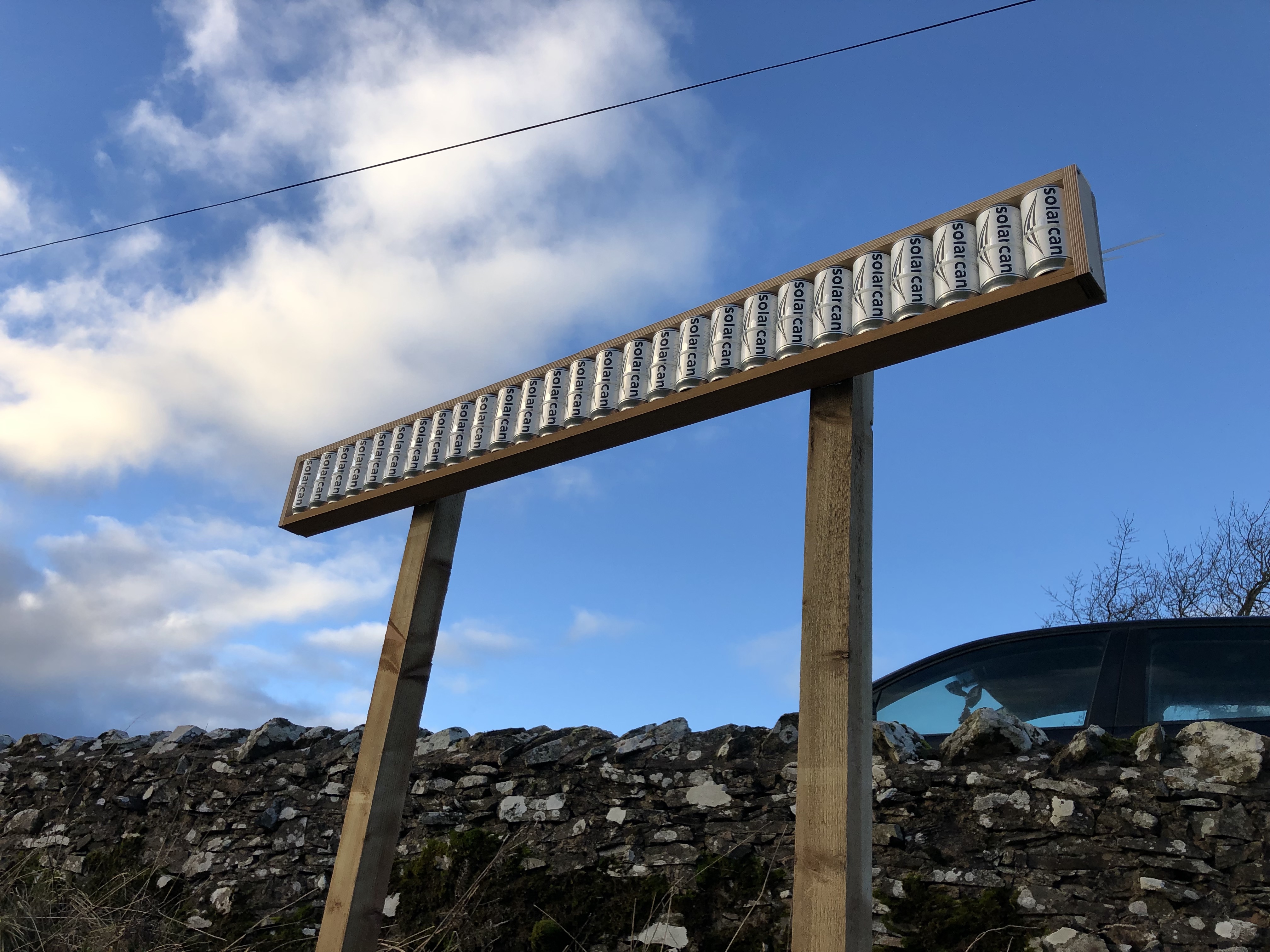
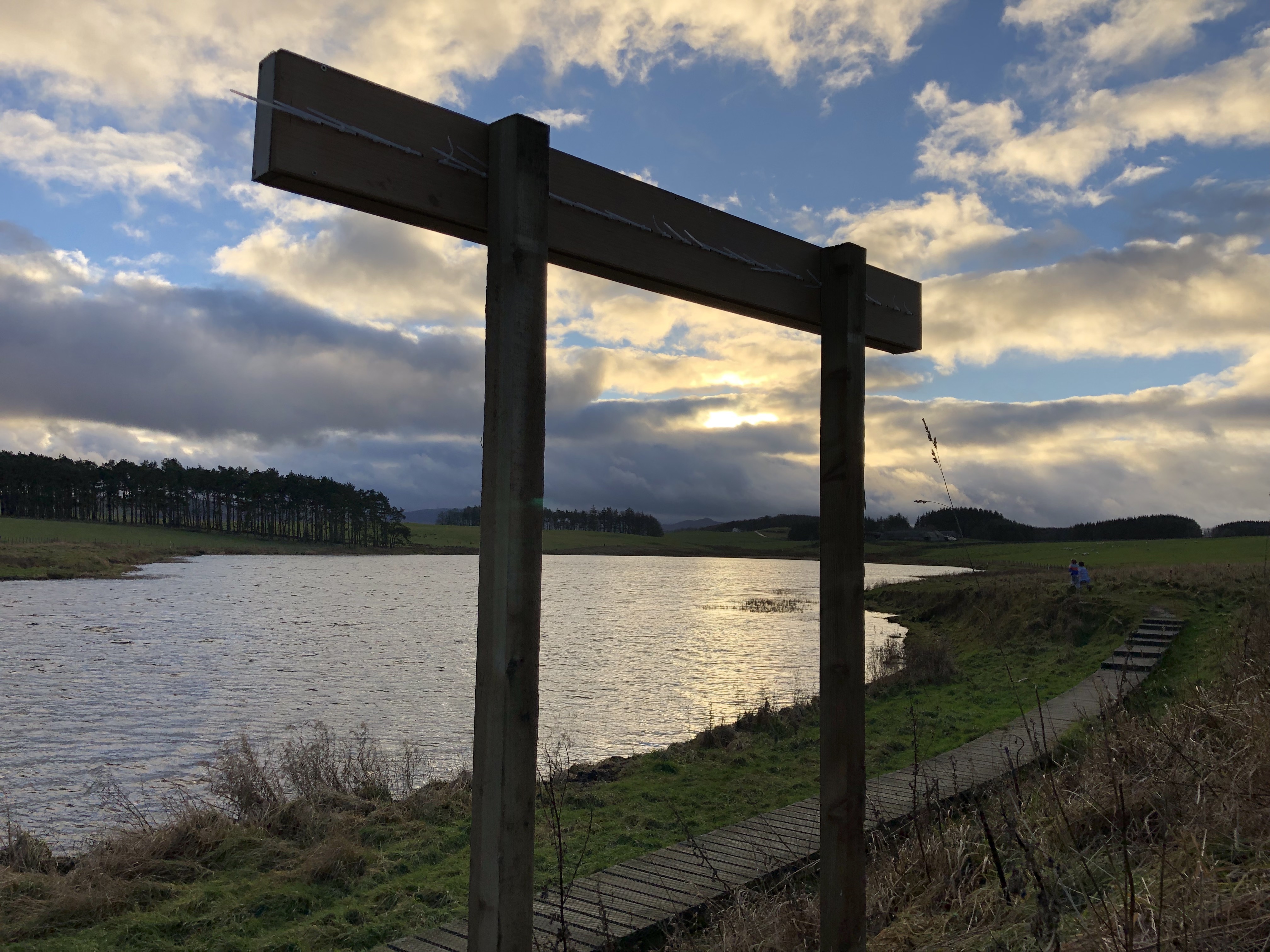
The Solarcan Matrix, December 21st 2018
Using the facilities at Edinburgh University’s Minto campus, a wooden frame was constructed to house 27 Solarcan in an array, one next to another. A variety of scrap plywood was used and designed to hold each Solarcan in position tightly. Holes drilled in the back wall allowed each Solarcan to be fastened using a 500mm cable tie. Two sets of flush mount brackets were used to hang the frame onto two 75x75mm pieces of timber, staked into the ground using a drive in fence post spike.
All Solarcan used were testing models almost identical to the retail version bar two significant differences: white label instead of clear and Bergger photographic paper instead of Ilford. The label has no impact whereas the Bergger paper produces a slightly redder tone in previous tests conducted.

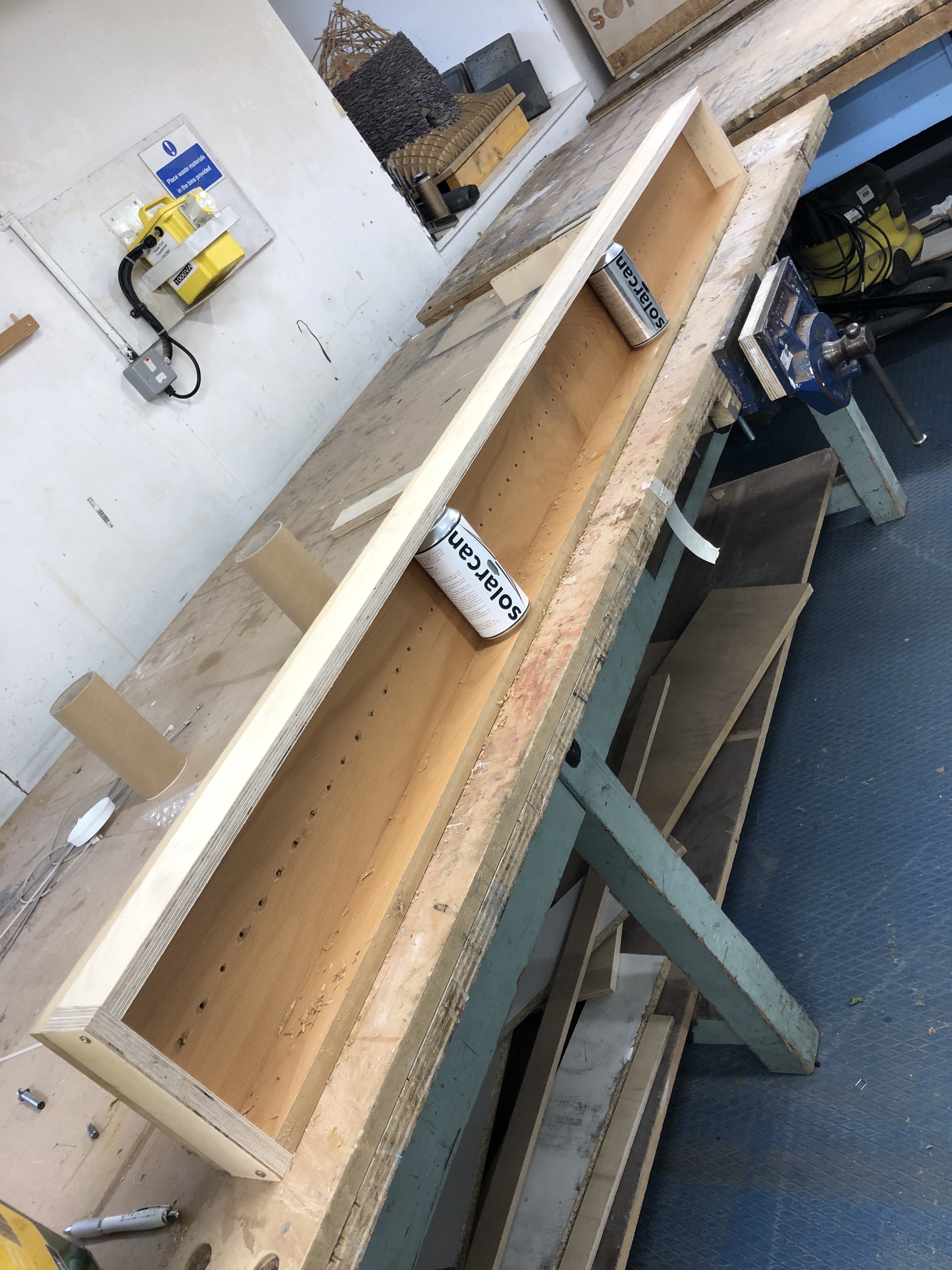

Assembling at in the wood workshop and later at home
Having previously attached Solarcan to a ‘no swimming’ sign at Williestruther Loch with great success, permission was sought to install the much larger Solarcan Matrix structure. The land is owned and controlled by Hawick Community Council and property manager Frank Scott was able to grant permission verbally, and later by email to have it installed at the most northern tip of the loch next to the wooden footpath. Frank Scott warned of possible vandalism due to the public location and promised to inform all stakeholders of the experiment.
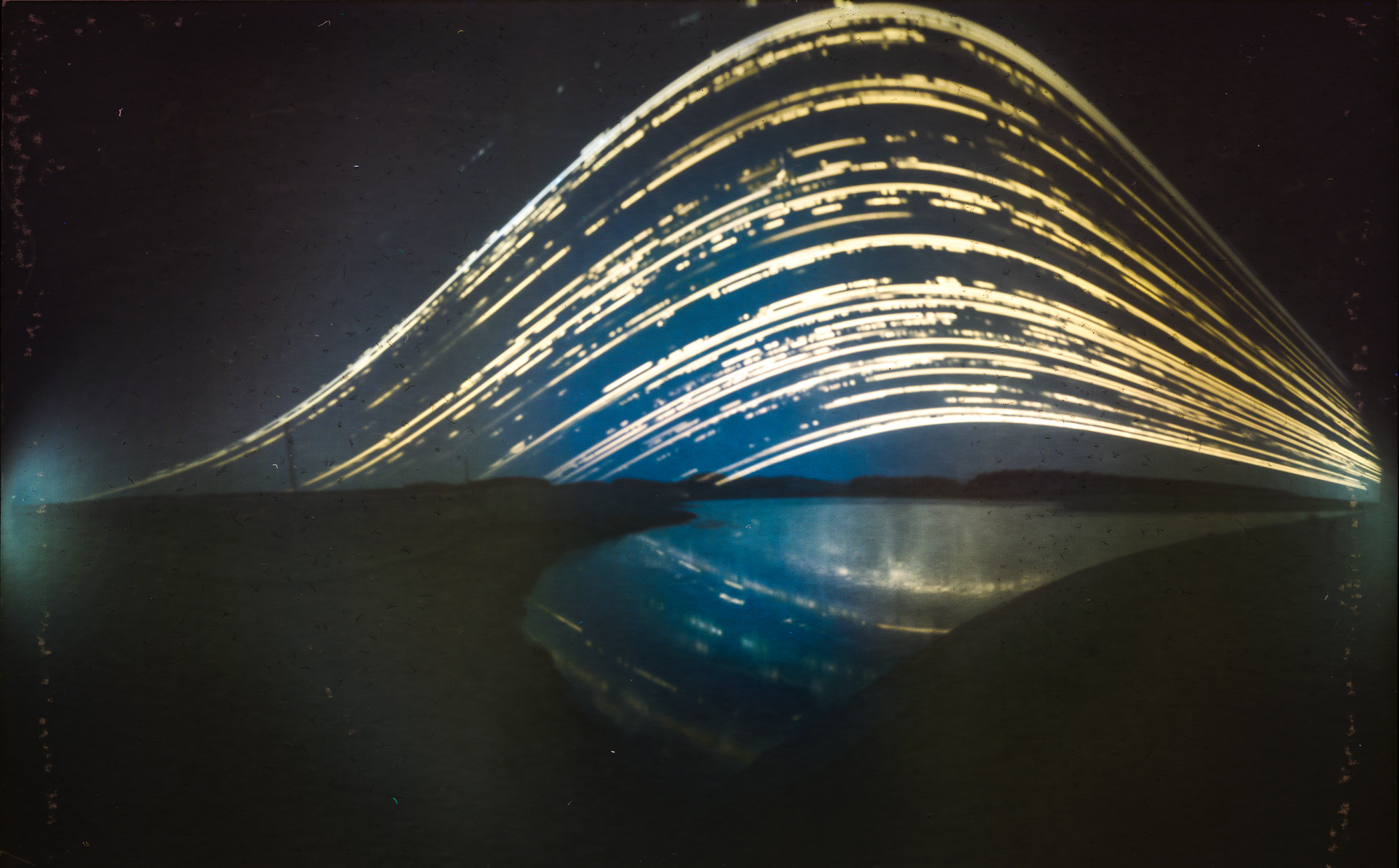
4-month Solarcan exposure at Williestruther Loch
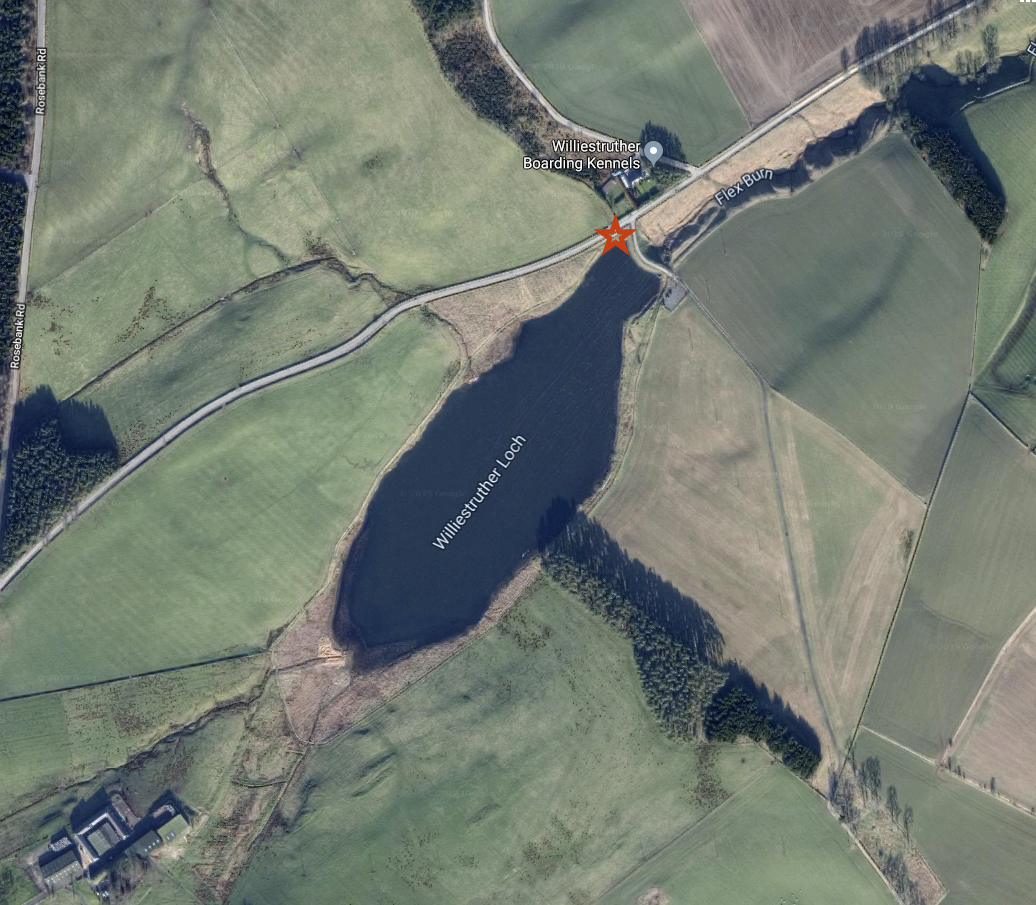
Position of Solarcan Matrix
Given that it is not always sunny in Scotland it was decided to harvest one Solarcan a week. This fell on a Thursday and required a short drive to the location where the closest Solarcan to the right had its cable ties clipped and was removed. In the first few weeks it was acceptable to do this collection early in the day as the Sun had already set, however as Summer approached the collection time got later.
Unfortunately some vandalism as predicted did occur. The method in which it was acted was peculiar in that only the next Solarcan to be taken was ever disturbed leading to the belief that the perpetrator was aware of the experiment. Fortunately the Solarcan is a resilient product, difficult to damage beyond its purpose for light collection. The impact at worst meant the latest path of the sun would be offset as is evident in several of the frames.
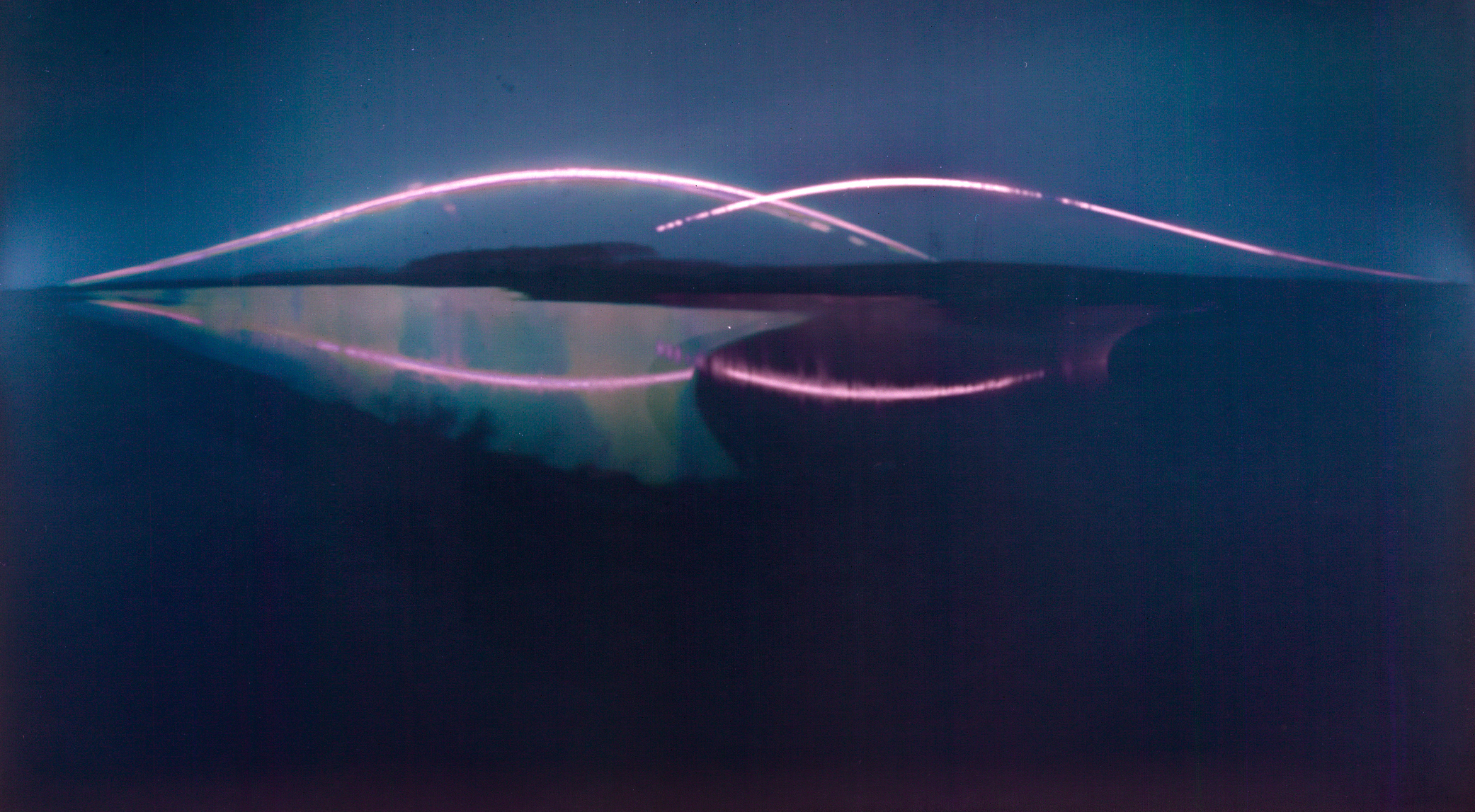
Serendipity played a part in the third Solarcan collection which had been intentionally twisted by a vandal to face the wrong way. The final image has an appearance of lips of a body lying on its side.
Each week’s image was processed at sporadic intervals after harvesting. Occasionally immediately after, sometimes after three weeks as a group. The Plustek ePhoto scanner was used for the raw scan, with settings of 600DPI, colour, auto crop & enhance turned off and output to TIFF. Once scanned the files were imported to Adobe Lightroom and inverted using the curves tool. Minor adjustments with colour balance and AI sliders to achieve the final look.
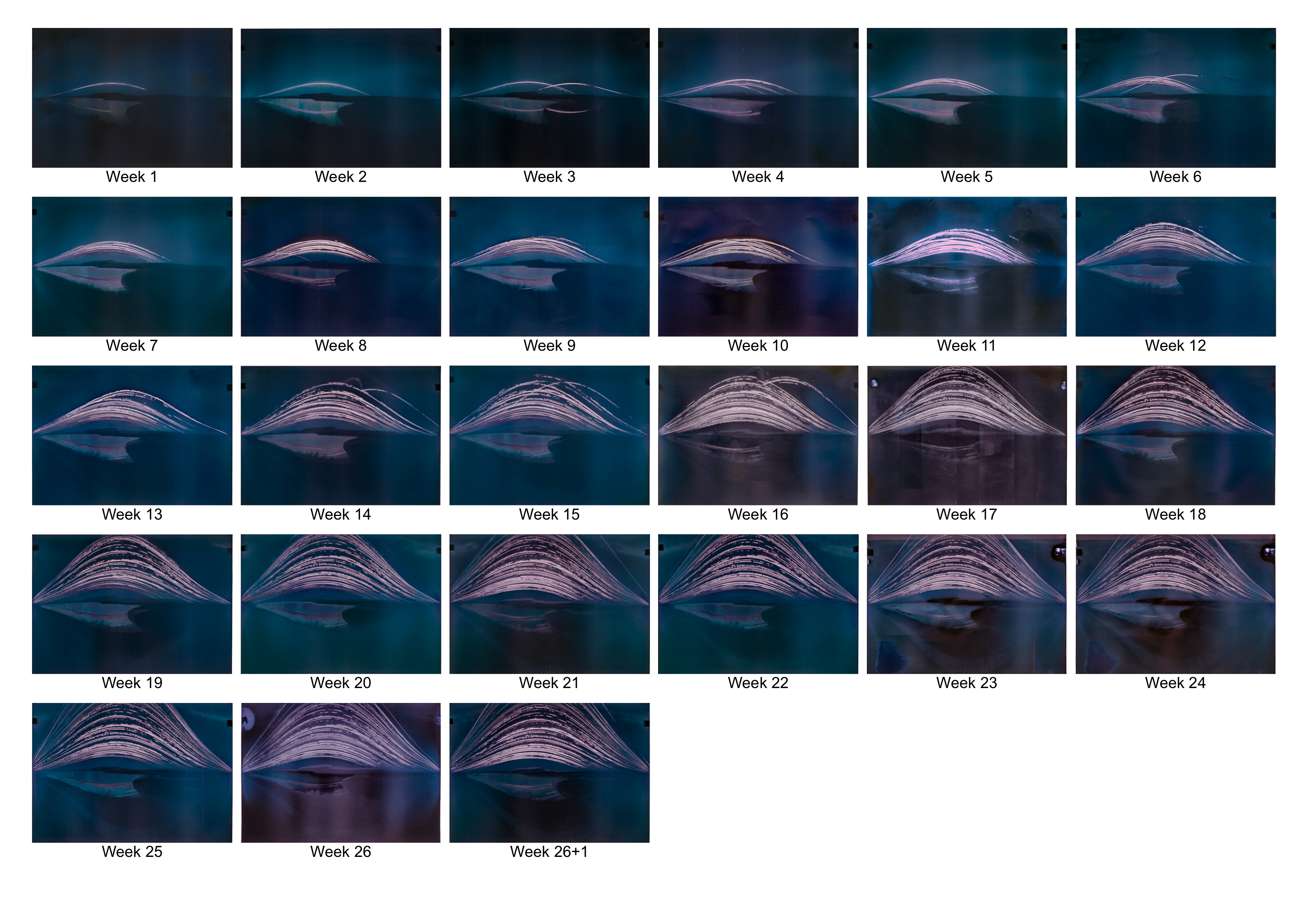
Grid of all Solarcan results, scanned & inverted.
It was noted that during a period of a few weeks after the winter solstice the Sun’s path did not begin to ascend as expected. This addressed an old problem of why the Sun’s path was brighter on a Solarcan image during the winter months. The little apparent movement upwards in the frame results in the sun’s path ‘drawing’ over itself for approximately 3 weeks before significant ascension begins. The highest weeks around summer were clipped off the top of the frame as the sun’s position in the sky was higher than the field of view captured by a traditionally placed Solarcan. This could be rectified by tilting the Solarcan upward or placing the pinhole toward the top of the Solarcan.
Another unusual and unexpected result was the variety of tones achieved on the photographic paper. Despite every sheet taken from the same brand new box of Bergger, there was significant difference in colour on four of the sheets. It is unclear if this had something to do with the exposure or the paper coating itself and would need further testing to establish the cause.
To create the timelapse the individual images were ordered and opened as layers in Photoshop and inserted into an animation timeline. As each Solarcan on the Matrix faced a slightly different way by only a few degrees or less each frame needed repositioning by hand (or mouse pointer) for a smoother transition during animation, however this meant many offset frames with black spaces on at least two sides. This could have been left, or at least corrected with a crop, however a pleasing result was found by using the content-aware fill tool on the blank parts of the canvas.
Two versions of the animation were rendered out, one with increased saturation & contrast, another in monochrome which may be easier on the eyes. Both were output as 256 colour GIFs
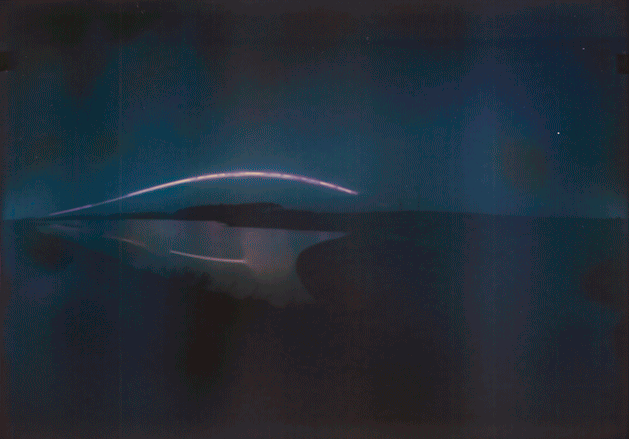
The Solarcan Matrix timelapse in colour, December 21st 2018 - June 21st 2019
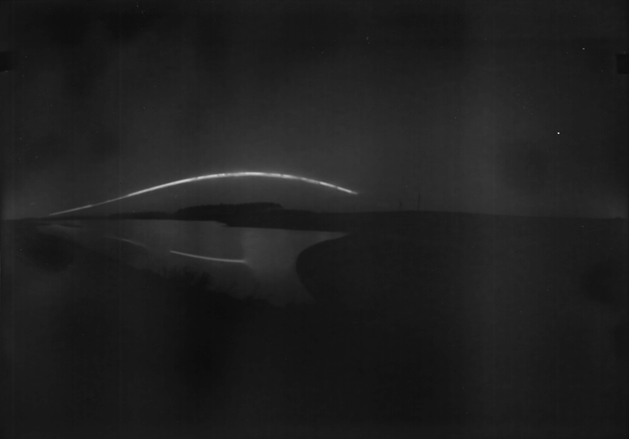
The Solarcan Matrix timelapse in monochrome, December 21st 2018 - June 21st 2019
In conclusion, the images as a pictorial experiment have been well received on social media like Twitter & Instagram. A future attempt would retain the 27 and alter the fabrication (pinhole) position to capture the summer solstice. The wooden frame suffered some damage from weathering and as such a stronger mix of materials should be used. A placing on private land would mitigate the issue of vandals.
It is believed that the Solarcan Matrix is the first solstice to solstice solargraphy timelapse.

Pingback: This is the World’s First Solargraphy Timelapse - NewsGroove Uk
Pingback: This is the World’s First Solargraphy Timelapse – Print
Pingback: This Solarcan Matrix Tracked 27 Weeks of the Sun’s Path Leading up to the Summer Solstice #ArtTuesday « Adafruit Industries – Makers, hackers, artists, designers and engineers!